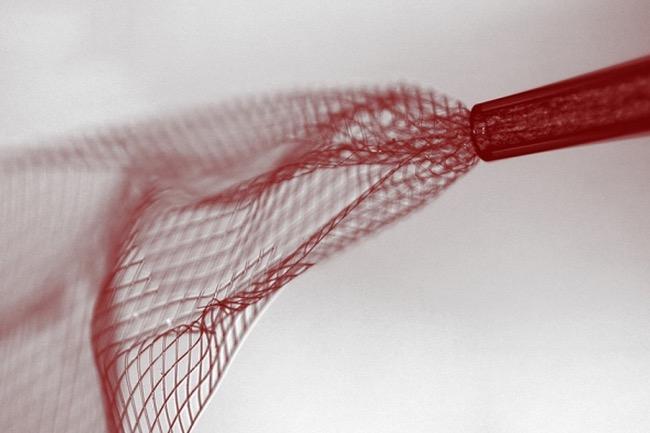
Unlike other brain implants, which typically require complex surgical procedures to implant and can sometimes cause scar tissue to form, this new implant only requires a minimally invasive implantation procedure, and uses a soft scaffold that doesn’t damage brain tissue.
The implant itself is essentially a tiny, conductive polymer mesh that can be rolled up and loaded into a syringe. Each strand of the mesh is as soft as silk, flexible as brain tissue itself, and can be imbued with either electrodes or transistors. Once implanted, the roll unfurls and affixes itself to the nearby tissue. Depending on which type of hardware it’s outfitted with, the mesh can either “listen” to the electrical signals put off by neurons, or stimulate them directly with tiny electrical pulses.

“I do feel that this has the potential to be revolutionary,” Lieber noted in a statement. “This opens up a completely new frontier where we can explore the interface between electronic structures and biology. For the past 30 years, people have made incremental improvements in micro-fabrication techniques that have allowed us to make rigid probes smaller and smaller, but no one has addressed this issue — the electronics/cellular interface — at the level at which biology works.”
It’ll likely be a while before this tech makes its way into human brains, but the research looks promising. The next steps will be to implant larger meshes into animal brains, armed with different kinds of sensors, to record more neural activity and gather more data. The team is also working to figure out a way to implant the device into the brains of newborn mice, where it would unfold further as the brain grew, and is also seeking to add tiny nanowire probes to the mesh for recording electrical activity both inside and outside cells.



